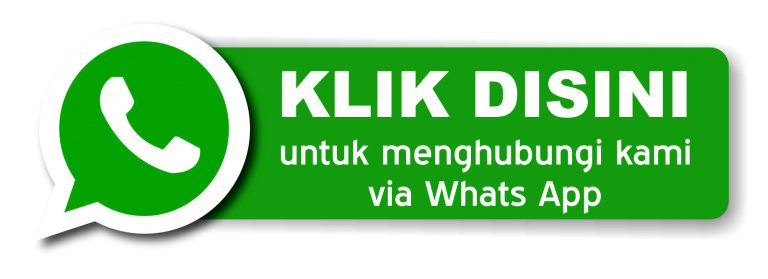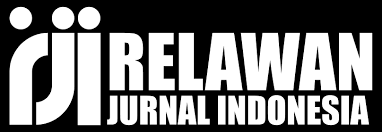Pengaruh Kecanduan Konten Digital terhadap Kualitas Pendidikan Anak; Tantangan dan Solusi di Era Digital
DOI:
https://doi.org/10.61722/jipm.v3i`1.722Keywords:
Quality of Education, Digital Era, Technology.Abstract
This research aims to explore the quality of children's education in the digital era, focusing on the influence of technology on the teaching-learning process. The method used is literature study and survey, involving analysis of various scientific publications and data collection through questionnaires. The research findings indicate that technology can enhance access to and quality of education if used effectively, such as expanding the range of learning materials and facilitating more dynamic student-teacher interactions. However, it was also found that the use of technology can pose challenges, such as student distraction due to irrelevant content and unequal access to quality devices and internet connections. The conclusion of this study provides valuable insights into maximizing the benefits of technology in children's education, including management strategies and holistic approaches to addressing emerging challenges. The integration of technology in the educational context must be done carefully and accompanied by appropriate supervision and guidance efforts to optimize the potential of technology in achieving better educational quality.
References
AR, M. M., Asmoni, A., Aini, K., & Wardi, M. (2024). The Relationship of the 5th Batch Campus Teaching Program to Literacy and Numeracy Skills in Elementary Schools. AL-ISHLAH: Jurnal Pendidikan, 16(2), 1999-2011.
AR, M. M., Rasyid, S. F., & Ridwan, M. (2021). Legacy of heroic values education kh. abdullah sajjad from madura assisted with learning comics for sd/mi students in sumenep. Madrasah: Jurnal Pendidikan dan Pembelajaran Dasar, 14(1), 79-88.
Asmoni, A., & Hodairiyah, H. (2022, November). IMPROVING TEACHER ABILITY IN CLASSROOM MANAGEMENT POST COVID-19 PANDEMIC AT INTEGRATED ISLAMIC ELEMENTARY SCHOOL, PANGARANGAN SUMENEP. In Proceeding International Conference on Digital Education and Social Science (Vol. 1, No. 1, pp. 1-6).
Asmoni, A., & Kuswandi, I. (2021). College Survive Strategy Through Risk Management. Praniti Wiranegara (Journal on Research Innovation and Development in Higher Education), 1(1), 01-09.
Brown, J. S., Collins, A., & Duguid, P. (1989). Situated cognition and the culture of learning. Educational researcher, 18(1), 32-42.
Cuban, L. (2001). Oversold and underused: Computers in the classroom. Harvard University Press.
Dillenbourg, P., Zufferey, G., Alavi, H. S., Jermann, P., Jermann, P., Bonnard, Q., ..., & Kaplan, F. (2018). Classroom orchestration: Balancing between the orchestration load and learning efficacy. Computers & Education, 69, 162–181.
Ertmer, P. A., & Ottenbreit-Leftwich, A. T. (2019). Teacher technology change: How knowledge, confidence, beliefs, and culture intersect. Journal of Research on Technology in Education, 42(3), 255–284.
Hardiansyah, F., Armadi, A., AR, M. M., & Wardi, M. (2024). Analysis of field dependent and field independent cognitive styles in solving science problems in elementary schools. Jurnal Penelitian Pendidikan IPA, 10(3), 1159-1166.
Hartono, A. (2020). Dampak Penggunaan Gadget pada Anak-anak Terhadap Prestasi Belajar. Jurnal Pendidikan Anak, 5(2), 78-89
Hartono, A., & Nugroho, D. (2020). Enhancing Student Engagement through Technology: Best Practices and Challenges. Journal of Educational Technology, 45(4), 321–335.
Jamilah, J., AR, M. M., Fauzi, M., Ahmad, S., Arendra, A., Hidayat, K., & Dzulkarnain, I. (2025). Pengolahan Limbah Sabut Kelapa dan Siwalan Sebagai Produk Bernilai Tambah Di Desa Romben Barat Sumenep. AKM: Aksi Kepada Masyarakat, 5(2), 677-684.
Jusuf, S. (2017). Implementasi Teknologi Informasi dalam Pembelajaran untuk Meningkatkan Kualitas Pendidikan. Jurnal Pendidikan Informatika Dan Sistem Informasi, 3(2), 45–56.
Kartika, D. (2018). Analisis Efektivitas Pelatihan Orang Tua dalam Mengelola Penggunaan Teknologi Digital oleh Anak-anak. Jurnal Pendidikan Keluarga Dan Masyarakat, 10(3), 56–68.
Kartika, N. (2018). Challenges Faced by Teachers in Integrating Technology in Education: A Case Study. International Journal of Educational Technology, 12(3), 189–204.
Livingstone, S., & Haddon, L. (2018). Theories of childhood in the digital age. Routledge.
Livingstone, S., & Haddon, L. (2019). EU Kids Online: final report. London: EU Kids Online.
Prensky, M. (2001). Digital natives, digital immigrants part 1. On the Horizon, 9(5), 1–6.
Rahayu, D. (2019). Pengawasan Orang Tua terhadap Konten yang Diakses Anak-anak Melalui Teknologi Digital. Jurnal Pendidikan Keluarga, 7(1), 34–47.
Roberts, J. A., Yaya, L. H. P., & Manolis, C. (2019). The invisible addiction: Cell-phone activities and addiction among male and female college students. Journal of Behavioral Addictions, 8(2), 404–417.
Santoso, B. (2018). Pengaruh Integrasi Teknologi Digital dalam Pembelajaran terhadap Keterlibatan Siswa di Era Digital. Jurnal Teknologi Pendidikan, 9(1), 12–25.
Santoso, D. (2020). Parental Training for Managing Children’s Technology Use: Strategies and Effectiveness. Journal of Parenting and Technology, 8(1), 35–50.
Selwyn, N. (2016). Education and technology: Key issues and debates. Bloomsbury Publishing.
Siemens, G., & Long, P. (2011). Penetrating the fog: Analytics in learning and education. EDUCAUSE review, 46(5), 30-32.
Shapiro, R. B., & et al. (2019). Social media and adolescent mental health: A systematic review. Clinical Psychology Review, 86, 101–119.
Suhartono, F. (2018). Kecanduan Teknologi dan Dampaknya pada Kesejahteraan Psikologis Anak-anak. Jurnal Psikologi Anak, 12(3), 112–125.
Suryanto, R., & Setiawan, A. (2019). Integrating Digital Technology in Learning: Strategies and Impact on Student Engagement. International Journal of Educational Technology, 12(2), 156–170.
Sutanto, A. (2019). The Impact of Social Media Use in Learning Environments: Opportunities and Challenges. International Journal of Educational Technology, 13(2), 87-102.
Sutanto, B. (2019). Dampak Penggunaan Media Sosial dalam Pembelajaran terhadap Interaksi Sosial Siswa. Jurnal Psikologi Pendidikan, 15(4), 189–201.
Twenge, J. M., & Campbell, W. K. (2018). Associations between screen time and lower psychological well-being among children and adolescents: Evidence from a population-based study. Preventive Medicine Reports, 12, 271–283.
Utomo, B. (2020). Enhancing Student Engagement through Social Media Integration in Learning. Journal of Educational Technology, 45(3), 210–225.
Utomo, R. (2017). Strategi Pencegahan Kecanduan Teknologi Digital bagi Siswa di Era Digital. Jurnal Kesehatan Anak dan Remaja, 4(2), 90-102.
Wijaya, E. (2017). Integrasi Teknologi Digital dengan Metode Pembelajaran Tradisional: Studi Kasus di Sekolah Menengah X. Jurnal Pendidikan Teknologi Dan Kejuruan, 8(2), 67–78.
Wijaya, E. (2017). Teacher's Role in Integrating Technology into Traditional Teaching Methods: Challenges and Opportunities. Journal of Technology in Education, 10(1), 45-60.
Wijaya, E., & Setiawan, A. (2020). Integrating Technology in Content Supervision: Strategies and Challenges. International Journal of Educational Technology, 13(1), 67–82.
Wirawan, I. (2020). Peran Guru dalam Menerapkan Teknologi Digital dalam Pembelajaran: Perspektif Guru Sekolah Dasar. Jurnal Ilmu Pendidikan Dasar, 6(1), 23-36.
Zhao, Y., & Frank, K. A. (2003). Factors affecting technology uses in schools: An ecological perspective. American Educational Research Journal, 40(4), 807-840.
Zhou, L., & Wu, H. (2020). Online learning and mental health during the COVID-19 pandemic: A study of Chinese middle school students. Journal of Educational Technology Development and Exchange, 13(2), 131–145.
Downloads
Published
How to Cite
Issue
Section
License
Copyright (c) 2024 JURNAL ILMIAH PENELITIAN MAHASISWA

This work is licensed under a Creative Commons Attribution-ShareAlike 4.0 International License.













